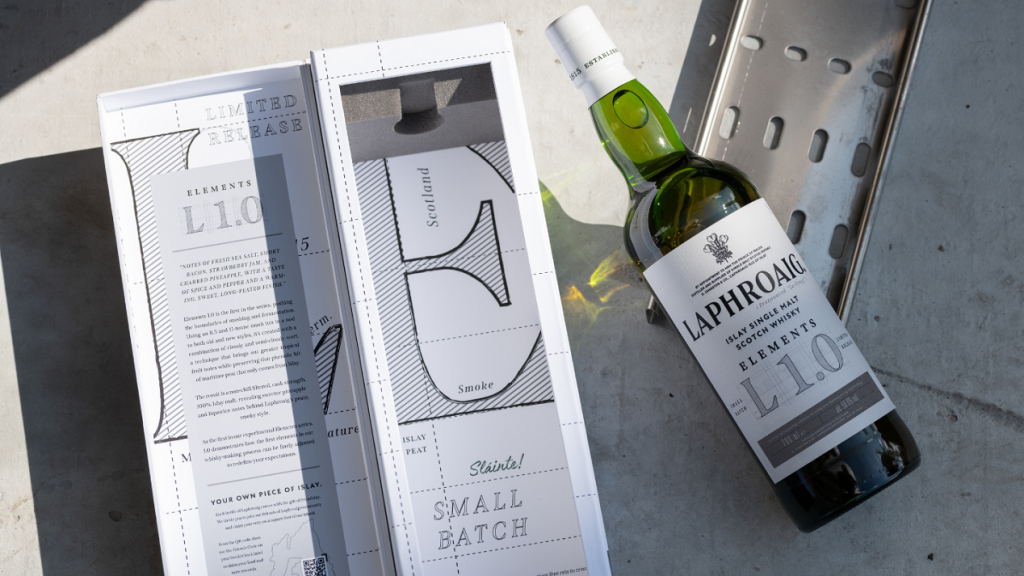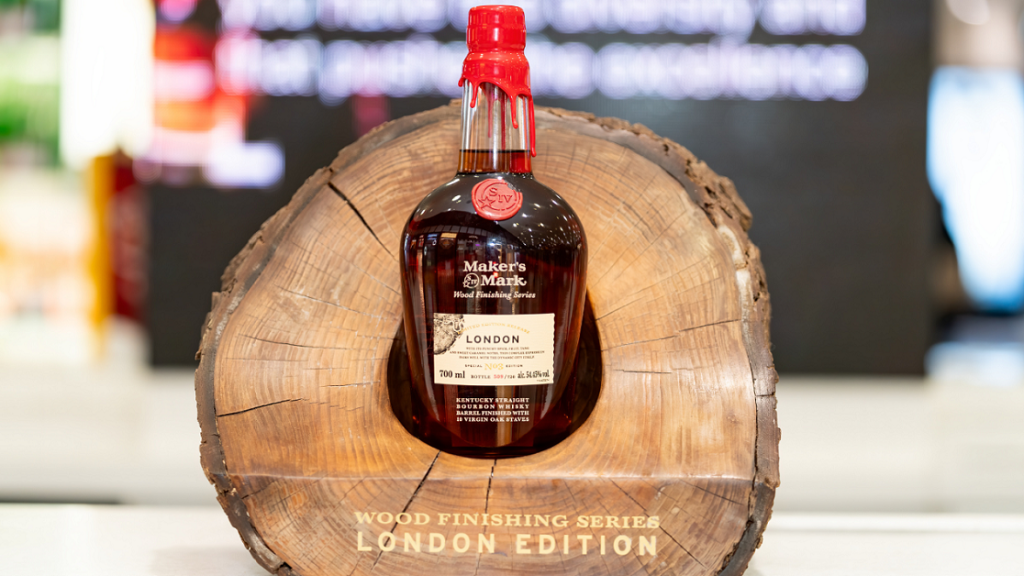
Suntory Global Spirits, the owner of brands including Jim Beam Bourbon, Laphroaig Scotch and Yamazaki Japanese whisky, has been “investing heavily” in global travel retail (GTR) as it looks to capitalise on the post-pandemic recovery in global travellers.
Ashish Gandham, the managing director of the company’s GTR business, sat down with Just Drinks to discuss trends in the channel, the differences with domestic retail shoppers and why ‘premiumisation’ can be a troublesome term to throw around.
Henry Mathieu (HM): How has Suntory’s travel-retail business fared since the pandemic?
Ashish Gandham (AG): For the category as such, the anticipation was there that by 2024, travel retail as a category for all industries, especially alco-bev, will be back by 2024 at the same levels that it was pre-pandemic.
That includes passengers back at the same levels, their spending will be back, and so on and so forth, so overall value as well. What we’ve seen is passengers are back to at a higher level compared to pre-pandemic. Some pockets are leading the growth, some pockets are slightly lagging behind due to mix of nationalities that are travelling or not travelling. Overall, the channel and the category has recovered. 2023 and early 2024, all indications that the category is back and has surpassed pre-pandemic levels pretty much everywhere.
HM: Would you say the category is fully beyond the Covid hangover then?
AG: Would we say that the Chinese travellers are back in the same numbers? Maybe not. There are some ups and downs. However, if you include Hainan as part of the travel-retail space that was created during the pandemic and has continued to add a certain value, that’s one.
Indians, as a nationality, are travelling more than they used to. They’re covering up some of the gaps we have from the Chinese nationality and other travellers, as well as their spend. Some of the other nationalities in Asia like the Vietnamese are spending a lot more than they would have initially and they’re travelling more so the natural growth of certain emerging markets and their nationalities has helped compensate some of the others.
Also, post-pandemic, there was a natural trend where people started travelling more than what they would have and what we saw was almost like revenge travel that started. Even today, for example, airlines are at capacity and adding capacity. There are more orders in terms of backlogs, in terms of plane orders. If you look at it, a couple of new players have emerged in the airlines industry.
There are certain nuances where, in the initial phase of recovery, we saw average basket spend go up significantly. Penetration was high, footfalls were high, conversion was high and average basket spend too, so the quality of passengers was higher. Those were the first ones to travel, the affluent or business travellers got onto planes first, and hence their propensity to spend was higher and that was reflected. Over time that has plateaued, or in some locations that has started going backwards, back to pre-pandemic levels. So, when I say the category has come back at an overall level, value-wise, when I speak to most of my customers, everybody tells me that their retail sales value is higher than pre-pandemic.
HM: Have some of these numbers fallen off more recently?
AG: Now, what they’re saying is, in the last six months, penetration numbers have started dropping. That means fewer people are walking into the store. Airports are busier and they have more passengers but not everybody is walking into the store. As soon as the quality of passenger has dropped, penetration numbers have started dropping.
Conversion is up still but the average basket spend has dropped as well, so there are ups and downs in the algorithm, but overall, it is still a positive sign for the industry.
HM: What effect has the partial return of Chinese travellers had on the GTR market in the last year or so?
AG: At an overall level, there is some impact. It is not as big as to impact the overall category negatively. There are other nationalities that have helped, or the absolute percentage spending of certain nationalities going up has helped, but in pockets, like, for example, Singapore or Thailand, in those locations, the number of Chinese travellers, if they are down, the impact on those particular locations has been significantly higher.
Overall, the number of Chinese travellers hasn’t yet hit pre-pandemic levels across all locations. Hainan became a viable source of duty-free products for the Chinese through the pandemic. If you look at the pyramid, initially, the Chinese [who were travelling] outside China to get luxury products, duty-free products, were getting the same thing available in Hainan.

Now the expectation was, as travel opens up, you will still see at the top of the pyramid that the more affluent travellers and consumers still travel abroad. We started seeing that, whether they were travelling to Japan because the Yen has weakened, or they were still travelling to the usual destinations, transiting in Dubai, going to Paris, London, etc.
We started seeing that the bulk of the travellers were split. Some were still going to Hainan and then the macroeconomic situation in China meant that curve did not continue long enough for a full recovery of the Chinese traveller in terms of pure tax numbers. Even if they are travelling now, the macroeconomic situation back home is also impacting their spending patterns. A Chinese traveller typically bought a slightly more elevated offering, whether it was in from another state or an exclusive so that spending has slowed down. Even if they are travelling, they are not spending at the same level.
HM: Is ‘premiumisation’ still a key aspect of Suntory’s strategy despite the presence of more less affluent travellers?
AG: Normally what premiumisation would mean is people talking about pricing and taking price on existing core products. In 2021 and 2022, as the category was bouncing back post-pandemic, we saw there was more demand than supply. There was also COGS (cost of goods sold) inflation, so combining those two factors, the natural tendency was to take price. A lot of categories saw pricing accelerate. If that is the paradigm of premiumisation, I think that will be tempered for sure.
The overall trend of premiumisation, however, will continue in a different way. Firstly, travel-retail shoppers still expect deeper, richer experiences. They are in a slightly more exploratory and elevated state. Compared to the domestic market, consumers or shoppers tend to spend a bit more in travel retail. That is a great tenet to hold on to. If we can convince them that this product is great value for money – and when I say value for money, it does not mean a discount but value for money for what they are paying, getting the requisite value from an emotional perspective – then they will continue to upgrade versus domestic. That premiumisation trend will continue.
HM: Is that a distinguishing feature between GTR customers and domestic retail consumers generally?
Ashish Gandham: What happens typically [in] traditional off-trade in domestic markets, you are either in a ‘stock-up’ mode or you have an immediate need. In that space, what a consumer does is buy a regular product that they drink every day for stocking up, or something that they can share with their friends.
Cut to travel retail, the occasions that consumers and shoppers tell us they are looking for, as they are travelling, is gifting for business stakeholders or family members, or for themselves. That would mean you’re trying to pick up something that is not your regular stuff and that means you’re spending higher.
HM: When do you estimate volume sales will return to pre-pandemic levels?
AG: I think this year will be an inflection point. In the last six months, the situation has changed dramatically. Two or three factors have contributed. We are still seeing passenger growth and I talked about how fewer people are walking into the store but they’re also looking at different things and macroeconomic situations indicate consumers will start looking at value for money in a different way. They’re also trying to maximise their allowances so a greater percentage of people will continue to buy regular products but at a slightly valued discount compared to domestic markets.

Also, supply situations have eased. That means the demand and supply dynamic has shifted. That has also been exacerbated by domestic markets, where some of the domestic markets are seeing consumption slow down. All of that has meant there is more stock available, there is more product available, there are promotions and offers back on the shelf. Brands which are getting the balance right between those promotions and the demand will start to see more traction.
I would assume that by 2024 end, you will see volumes back to pre-pandemic level but the volume-to-value mix for this year particularly will be different. Overall, by the end of 2024, the category size versus pre-pandemic is still expected to be a lot higher but the volume will be back.
HM: What is Suntory Global Spirits’ innovation strategy for GTR?
AG: We are relatively young in this space, in travel retail. If you think about it, globally, before the Courvoisier divestiture, we were number three in the world in travel retail. When we started, let’s say 2019, we were number seven coming out of the pandemic. We recovered faster, getting up to number six. Our recovery in this channel has been faster because we have historically had more headroom to grow. We also realised this is a channel which lends beautifully to what we want to do as a company.
If you look at what our CEO says, we want to be the most admired premium spirits company in the world. The way we will do this is by bringing quality product but also creating rich experiences and, when you talk about product and experiences together, innovation needs to sit at the heart of it. In travel retail, why we’ve grown faster is because we’ve started investing in travel retail more than what we have historically for us. Travel retail is a brand-building channel. We will look to grow the scale of our presence in travel retail and it will be an exemplification of the Suntory Global Spirits strategy, which is about getting quality products, innovative products and to deliver rich experiences in this channel.
HM: What products and brands are you looking to prioritise?
AG: Innovation will remain crucial at both product and experience level and we will continue to invest in this channel at a category and product level. With Courvoisier being divested out of, we are a whisk(e)y company. We understand whisk(e)y better than most other competitors.
In terms of whisk(e)y, we want to make sure that we lead the way when it comes to what kind of innovations consumers are looking for. A lot of consumers are still in an explorative state in terms of whisk(e)y, what kind of whisk(e)y they like, and constantly their repertoire is widening. They’re constantly trying different products. For us, owning the innovation space within the whisk(e)y category is going to be crucial. We will look at all price brackets, give authentic products that have provenance, whether it is an American whiskey or a Japanese whisky but, across price ladders, we will be able to bring those innovations and that will be one of the key focus areas for us.
HM: How have you been dealing with volatile supply costs and inflationary pressures?
AG: I would say supply logistics is going to be a facet of business that we will need to get better at managing. That’s going to be a reality. It’s not constrained to alco-bev, it’s across the board. What that would mean is there are certain decisions that we’ll make in terms of what kind of product and what kind of pricing we are able to afford for our products when we make it available to our consumers.

I think overall, post-pandemic, we saw logistics costs go up dramatically. We also saw inflation was at an all-time high and hence input costs in terms of raw material were also high. Have we seen that flatten a bit? Yes. I think every company will agree. Have they gone away completely? No, there is still inflation and there are still challenges. You still see port congestions, demand outstripping supply in terms of containers, etc. There are still going to be some inflationary costs that we need to manage and that’s going to be business imperative to manage over time.
HM: Are these the biggest challenges that you’re likely to face over the next 18 months or so?
AG: If we look at our industry as alco-bev and within travel retail as well, the biggest element that we need to really focus on is driving consumption. We need to get to the heart of what is the consumer expecting [and] what is the sweet spot of what they’re willing to pay for a certain product.
We need to get closer to understanding their data and their insights. The top two or three customers that we have, people who’ve been in the industry, we met during TFWA (Tax Free World Association) in Singapore, and the single biggest thing we said that we aren’t doing very well, in spite of all the technological advances, is using data effectively.
We take a look at data at a certain level but we are not looking at consumer data and consumer insights effectively. The biggest thing to be done is understand what consumers are looking for, getting deeper in those insights, getting closer to the consumer, so that we can offer the best possible product at the best possible price.



